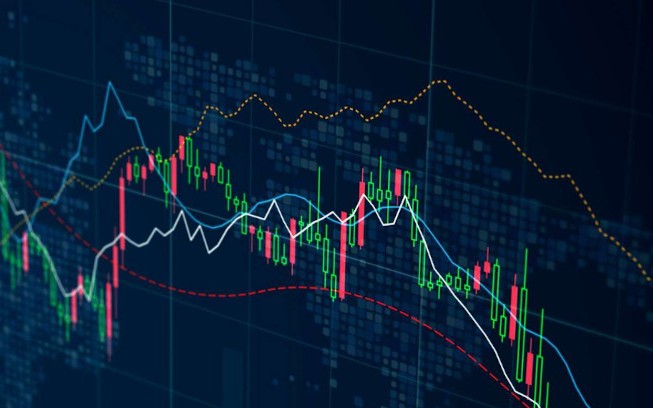Understanding Forex Trading A Comprehensive Definition and Overview

Understanding Forex Trading: A Comprehensive Definition and Overview
Forex trading, also known as foreign exchange trading or currency trading, is the global marketplace for exchanging national currencies against one another. The currency market is the largest and most liquid financial market in the world, averaging over $6 trillion in daily trading volume. It operates 24 hours a day, five days a week, allowing traders from every corner of the globe to participate at their convenience. In this article, we will delve into the definition of Forex trading, explore its workings, and guide you on how to embark on your trading journey, including resources like the forex trading definition Best Platforms for Trading.
What is Forex Trading?
At its core, Forex trading involves buying one currency while simultaneously selling another. Currencies are traded in pairs (e.g., EUR/USD, USD/JPY) where the first currency in the pair is known as the base currency and the second as the quote currency. The price of a currency pair reflects how much of the quote currency is needed to purchase one unit of the base currency.
The Mechanics of Forex Trading
To understand Forex trading, it’s essential to grasp the primary concepts of trading mechanics. The Forex market operates through a network of banks, brokers, and financial institutions that facilitate trading transactions. Unlike stock markets, there is no centralized exchange; trading occurs over-the-counter (OTC) through electronic platforms or via phone exchanges. This decentralized nature contributes to the high liquidity seen in Forex markets.
Currency Pairs
As mentioned earlier, trades are executed in currency pairs. A few common examples include:
- EUR/USD: Euro vs. US Dollar
- USD/JPY: US Dollar vs. Japanese Yen
- GBP/USD: British Pound vs. US Dollar
Each currency pair has its unique market dynamics that impact the exchange rate. Factors such as economic data releases, geopolitical events, and market sentiment can lead to fluctuations in currency prices.
Pips and Spreads
A pip (percentage in point) is the smallest price movement in the Forex market. For most pairs, a pip is equal to 0.0001, and it signifies the fourth decimal place in most currency quotes. However, for currency pairs that include the Japanese Yen, a pip is represented by the second decimal place (0.01).
The spread is the difference between the bid and ask price of a currency pair. It represents the transaction cost to the trader. Spreads can vary based on market conditions and volatility; during times of high activity, spreads may widen.
Types of Forex Trading
Forex trading can broadly be categorized into several types:
Day Trading
Day trading involves buying and selling currency pairs within a single trading day. Traders aim to capture intraday market movements and often close all positions before the market closes to avoid overnight risk.
Swing Trading
Swing traders hold positions for a few days or weeks, seeking to profit from expected market shifts. This trading style relies on chart patterns and technical indicators to identify potential turning points.

Scalping
Scalping is a high-frequency trading strategy where traders execute numerous trades to capture small price changes. Scalpers often rely on technical analysis and require strict discipline, as this method demands quick decision-making.
Advantages of Forex Trading
Forex trading presents numerous advantages that entice both novice and experienced traders:
- Liquidity: The Forex market’s massive trading volume ensures high liquidity, allowing for swift execution of trades.
- Accessibility: Forex trading can be done from virtually anywhere with an internet connection, and many brokers offer demo accounts to practice without real money.
- Leverage: Brokers often provide significant leverage, allowing traders to control larger positions than their initial capital would otherwise permit.
- Low Transaction Costs: Forex markets typically have lower transaction costs than equity markets.
Getting Started in Forex Trading
If you’re considering entering the Forex market, here are a few essential steps to follow:
1. Choose a Reputable Broker
Selecting a trustworthy Forex broker is crucial. Look for a broker that is regulated, offers competitive spreads, and provides a trading platform that suits your needs.
2. Open a Trading Account
After choosing a broker, you can open a trading account. Most brokers provide different account types, including demo accounts for practice and live accounts for real trading.
3. Learn Trading Strategies
Invest time in learning various trading strategies and disciplines. Consider technical analysis, fundamental analysis, or a combination of both to develop your personal trading plan.
4. Practice Risk Management
Successful trading requires a sound risk management strategy. Determine how much of your total capital you are willing to risk on each trade, and consider using stop-loss orders to limit potential losses.
5. Start Trading
Once you’re comfortable with your strategies and have practiced on a demo account, you can start trading with real money. Begin with smaller amounts while you refine your skills, and gradually increase your investment as you gain confidence and experience.
Conclusion
Forex trading offers exciting opportunities for profit, but it also includes inherent risks. Understanding the fundamentals and developing a solid trading plan is essential for success in this competitive environment. Whether you choose to trade as a hobby or pursue it as a professional career, being informed and practicing disciplined trading can help you navigate the world of Forex. With resources and platforms available to assist, anyone can embark on their Forex trading journey.

Deixe uma resposta
Want to join the discussion?Feel free to contribute!